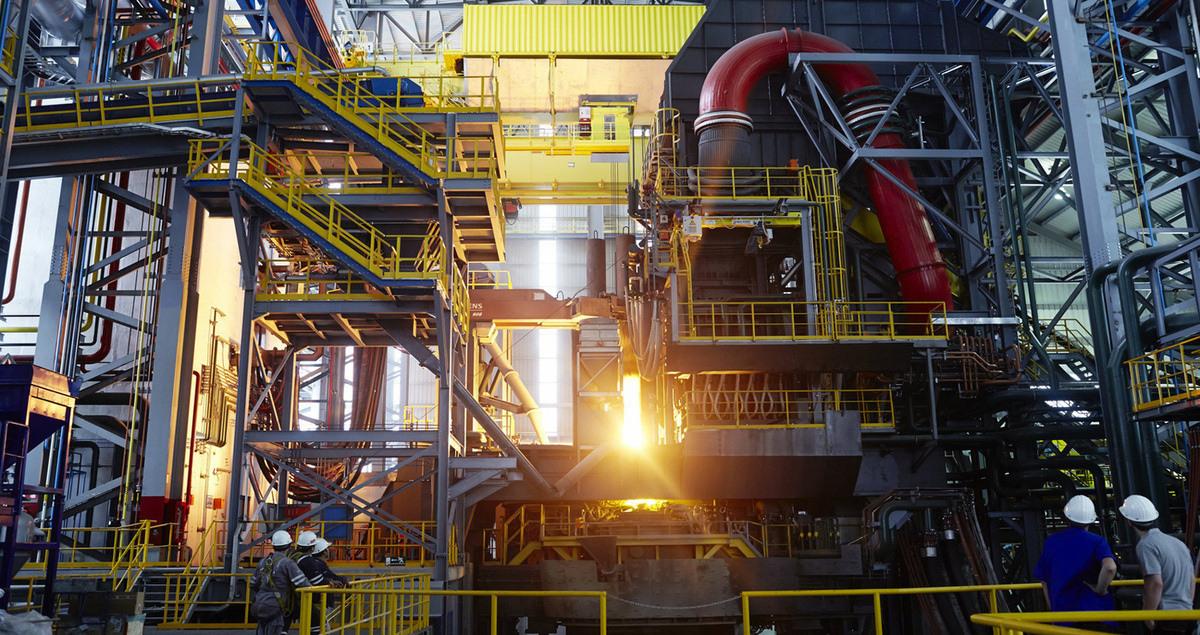This is how policymakers can boost the hydrogen market

Step by step, hydrogen has worked its way into the heart of the energy transition: as a storage medium for renewable energy; a fuel of the future for ships and planes; and a replacement for fossil fuels in homes, power and industry.
However, the speed of transitioning to hydrogen depends on how quickly its carbon-free production can ramp up, and on making it easily accessible where it’s needed.
Policy plays a key role here, as does international alignment and cooperation.
Alongside European Union’s hydrogen strategy, international partnerships are now being formed: for instance, Germany has teamed up with Australia for a joint feasibility study around the hydrogen supply chain and with countries in northern Africa for hydrogen production. Portugal and the Netherlands have recently signed a memorandum of understanding on jointly advancing the development of ‘green’ hydrogen.
How else can European policymakers accelerate our move towards making hydrogen a truly viable alternative? Here are three key areas to look at.
1. Building demand at scale
With the current global push for hydrogen, industry analysts predict that green, renewable hydrogen could be cost-competitive by 2030.
Costs, having already fallen by about half since 2015, are expected to reduce by a further 30% by the mid-2020s, thanks to scale economies, greater renewable energy volumes to be converted, and falling renewables prices.
However, to justify investments, there needs to be sufficient demand for hydrogen in the first place. This means making enough hydrogen available – at an affordable price – to encourage energy, transportation and industry to adopt it.
a) Decarbonising hard-to abate industrial applications
Hydrogen’s great role in the race to net-zero emissions is its potential to decarbonise CO2-intensive, ‘hard to abate’ industries. These sectors rely on fossil fuels either as raw materials or for energy, which cannot be simply electrified.
The steel industry produces more CO2 than steel. Merely shifting production from coal and coke-based blast furnaces to processes such as direct reduction of iron ore based on natural gas will be insufficient to meet environmental targets.
EU steel demand is projected to grow to 200 million tonnes of steel per year in 2050. Converting this entire production volume to hydrogen would require a minimum of 5.5 million tonnes per year.
This would amount to more than half of the total renewable hydrogen production of 10 million tonnes under current EU plans, which foresee 40 gigawatts of hydrogen electrolysers to be produced in the EU by 2030.
b) Getting ready in power and heating
A further demand generator will be the use of hydrogen as a storage medium for renewable power which is converted back into a steady supply of dispatchable electricity. The Hydrogen Council claims that more than 200 TWh could be generated from hydrogen in large power plants.
That said, hydrogen for power generation has not always been a priority on political roadmaps. If this gap isn’t closed, power plants unable to run on hydrogen will become stranded assets.
The good news is that existing power plants can be converted to hydrogen, allowing existing plants to transition to hydrogen cost-competitively.
These converted plants could help stabilise grids that operate with a high proportion of variable renewable electricity. This approach could also avoid the need to build new electricity infrastructure at a high capital cost, with long lead times and the risk of public opposition.
Home and industrial heating, which contributes 40% of CO2 emissions, represents another significant opportunity for hydrogen.
For example, in the Netherlands, a residential block in Rotterdam is being heated with 100% hydrogen to demonstrate the gas’s ability to decarbonise heating. Alongside this, the country’s HyWay 27 study is mapping out how the existing gas grid needs to adapt to carry hydrogen. One challenge will be transporting lighter hydrogen in pipelines built for heavier methane gas. This will require specialist compressors, something Mitsubishi Heavy Industries Compressor Corporation is already developing.
2. Creating common standards and definitions for growth
In addition to market-ready networks and products, analysts point to a lack of consistent standards as a barrier to market entry and, with that, to the expansion of the hydrogen economy.
As well as advocating an international harmonisation of standards, the EC has highlighted the importance of integrating the EU’s entire energy system, overcoming national and sectoral silos.
We need clear definitions, certification schemes, and standards that work across different sectors of the economy, across countries and regions of the world.
This is especially important when it comes to the development of international trade for hydrogen and hydrogen carriers.
Globally, initiatives such as the Hydrogen Energy Ministerial Meetings provide an important platform to align and promote hydrogen internationally.
3. Mechanisms to bridge the gap
But even with technology innovation and regulation falling into place, the success of hydrogen will still be down to basic economic principles: progress depends on generating market demand for ‘low carbon’ or ‘no carbon’ products over ones with a bigger carbon footprint.
Among different policy options, we see ‘Carbon Contracts for Differences’ as an important emerging instrument to effectively reward the application of climate-friendly technologies while addressing regulatory risks for the businesses in question.
Public procurement – which accounts for an average of 13% of GDP in OECD countries – should also play a much more active role in contributing to demand generation by prioritising low-carbon and carbon-neutral solutions in buying decisions. The EC’s Renovation Wave strategy is a first step along the way, aiming to renovate public buildings to become more sustainable.
The benefits of hydrogen are clear. Now we need to bring together industry leaders, civil society, governments, and regulators to build the infrastructure necessary for a global shift to hydrogen − and lower carbon emissions.
Advances in technology, supportive policies and public pressure have coalesced to move us closer to this target. But we are not out of the woods yet.
Get free eBook Hydrogen - Powering a Net-Zero Future





